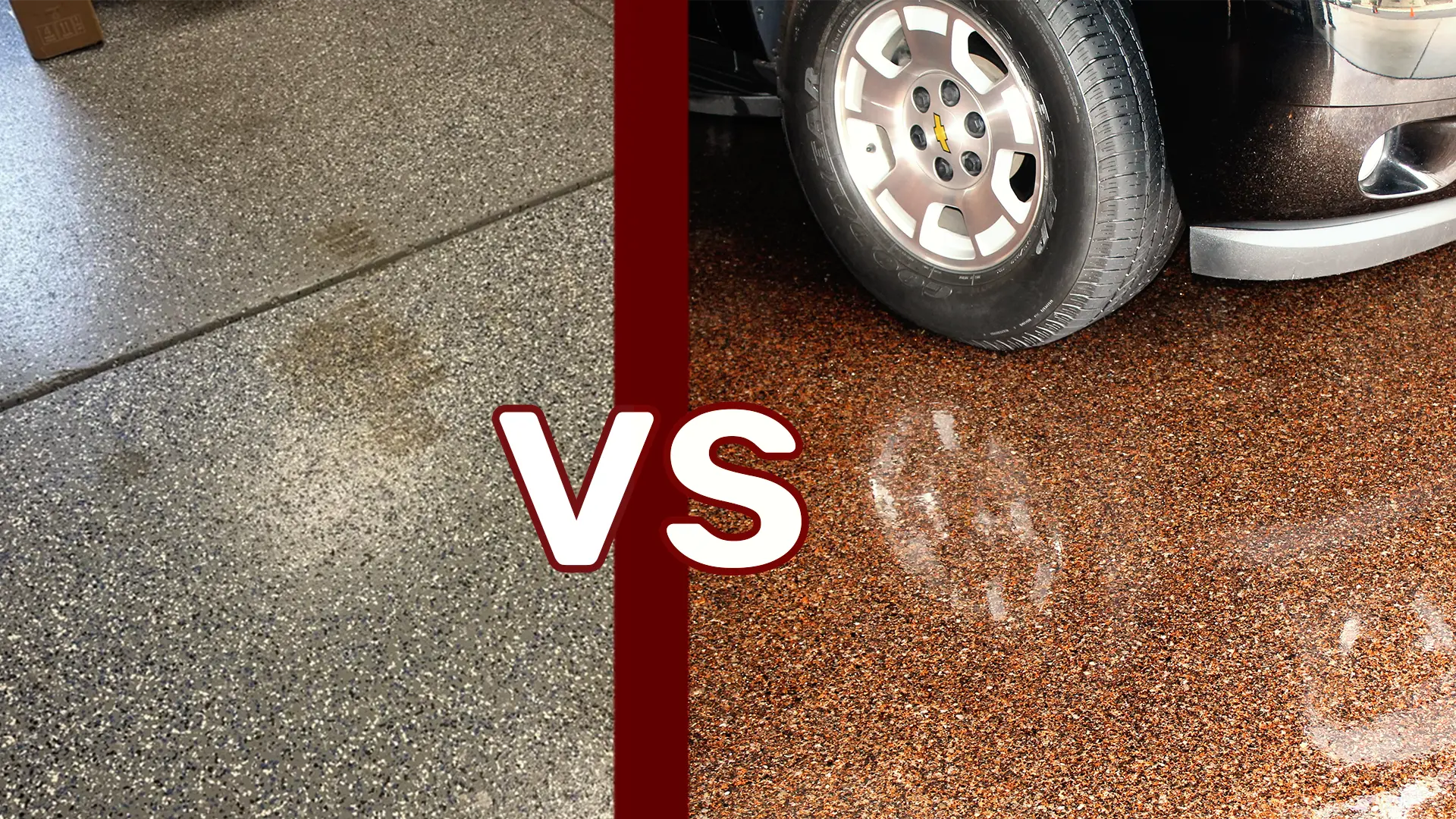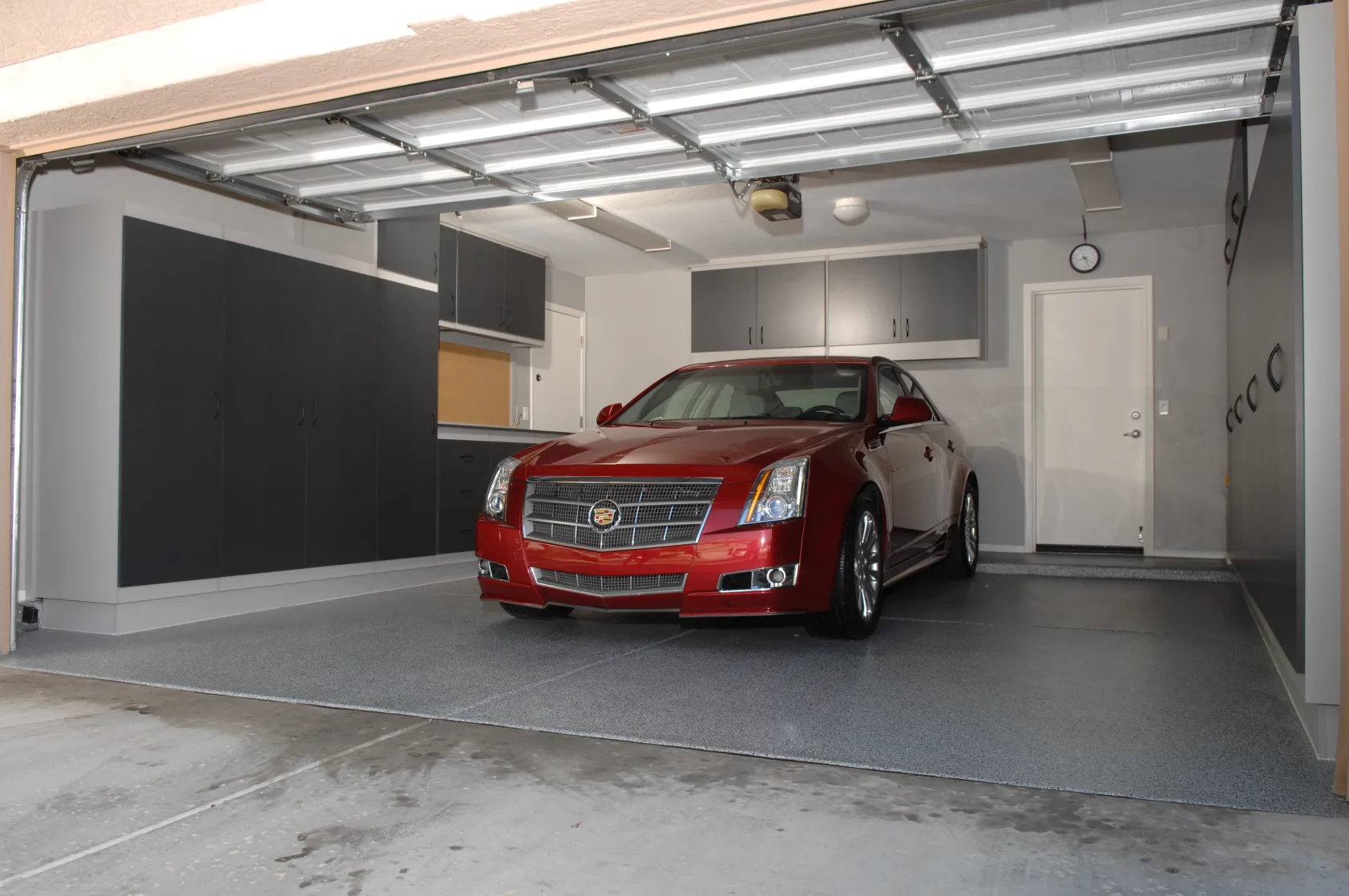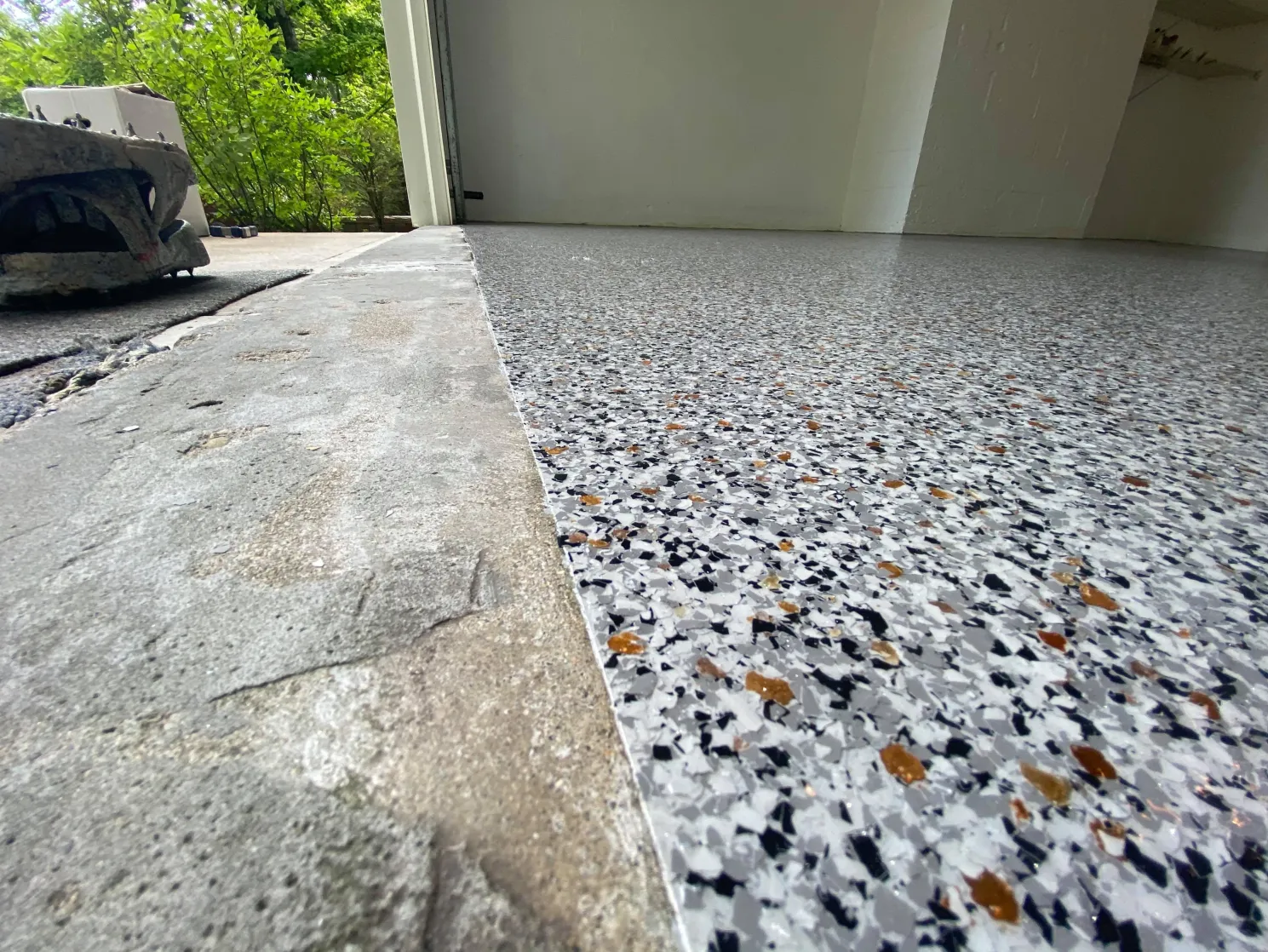What Is Hot-Tire Transfer, and Why Is It a Problem in Upstate New York?
Hot-tire transfer (aka “plasticizer migration”) begins when vehicle tires heat up from driving. Plasticizers – typically phthalates – in the tires migrate to the tire’s surface and leach into the garage floor coating when the car is parked. The plasticizers and road contaminants embed into the surface, leading to stains and premature coating deterioration. In Upstate New York, where summers bring hot pavement, the problem is even worse. The combination of temperature fluctuations, moisture, and road chemicals quickly breaks down lower-quality coatings.
How Does GFC’s Polyaspartic Flooring Prevent Hot-Tire Transfer?
At Garage Floor Coating (GFC) of New York, we use a high-quality hybrid epoxy and polyaspartic flooring system designed to resist hot-tire transfer and withstand Upstate New York’s harsh climate. Our multi-layer system includes:
- Epoxy Base Coat: We use a high-build, moisture mitigating, 100%-solids epoxy as the base layer. It slowly cures (we allow a full day) and penetrates deep into the concrete slab for superior adhesion and long-term durability. It acts as a doubly thick moisture vapor barrier, mitigating future moisture-related issues like MVT and high hydrostatic pressures.
- Full-Flake Broadcast: We then broadcast the customer’s chosen flake blend into the uncured, thick epoxy base layer in a full flake spread (so it completely covers the epoxy primer).
- Two Premium Polyaspartic Topcoats: We return the next day to apply two separate layers of our high-quality, 100%-solids polyaspartic clear coats. The dual 3:2 ratio, high cross-link density, 100%-solids polyaspartic coatings resist heat, impacts, UV fading, and chemical staining…including hot-tire transfer…far better than the lower-grade polyaspartic used in 1-day systems.
- 2-Day Installation Process: Unlike rushed 1-day systems, our 2-day process mitigates for both moisture and plasticizer migration, preventing peeling and staining.
- Warranty Against Hot-Tire Transfer: Most competitors refuse to warrant against hot-tire transfer, but GFC of New York stands behind its product with industry-leading protection.
Why Are 1-Day Polyaspartic Coatings Inferior?
Many companies advertise 1-day polyurea-polyaspartic coatings as a fast and easy solution, but these systems sacrifice durability for speed. 1-day systems:
- Use low-quality polyaspartic topcoats (<100%-solids, 1:1 ration, poor cross-link density) that can’t withstand hot-tire transfer. And they apply a single coat only!
- Use thin polyurea base coats that cure far too quickly, especially in the presence of medium to high moisture, preventing deep penetration and strong bonding with the concrete slab.
- Lack warranties against “moisture-related issues” and hot-tire transfer, leaving homeowners unprotected.
GFC’s polyaspartic flooring is formulated for superior strength and longevity, ensuring your garage floor stays in top condition for years to come.
Is GFC Polyaspartic Flooring the Right Choice for My Garage?
If you want garage flooring that holds up against Upstate New York’s extreme weather, road salts, and daily vehicle use, Garage Floor Coating of New York’s hybrid epoxy and polyaspartic flooring is the best choice. With its superior materials, moisture and hot-tire transfer resistance, and a warranty competitors won’t offer, it provides lasting protection and unbeatable performance.
Don’t settle for lower-quality coatings—choose Garage Floor Coating of New York’s hybrid epoxy and polyaspartic flooring for a garage floor built to last.



